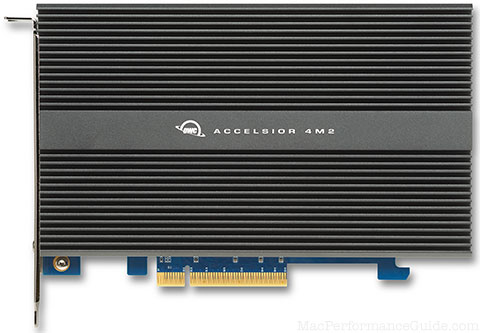

|


|

$200 Leica BP-SCL6 Lithium-Ion Battery (8.4V, 2200mAh) BACK IN STOCK in Accessories: Batteries and Power
|

|

|

|
IN STOCK!
For Sony mirrorless or Leica L.
An Hour With the Hasselblad H3D
Related: digital sensor, distortion, exposure, flowers, focusing, Hasselblad medium format, medium format, noise, optics, post processing, raw file processing, shutter
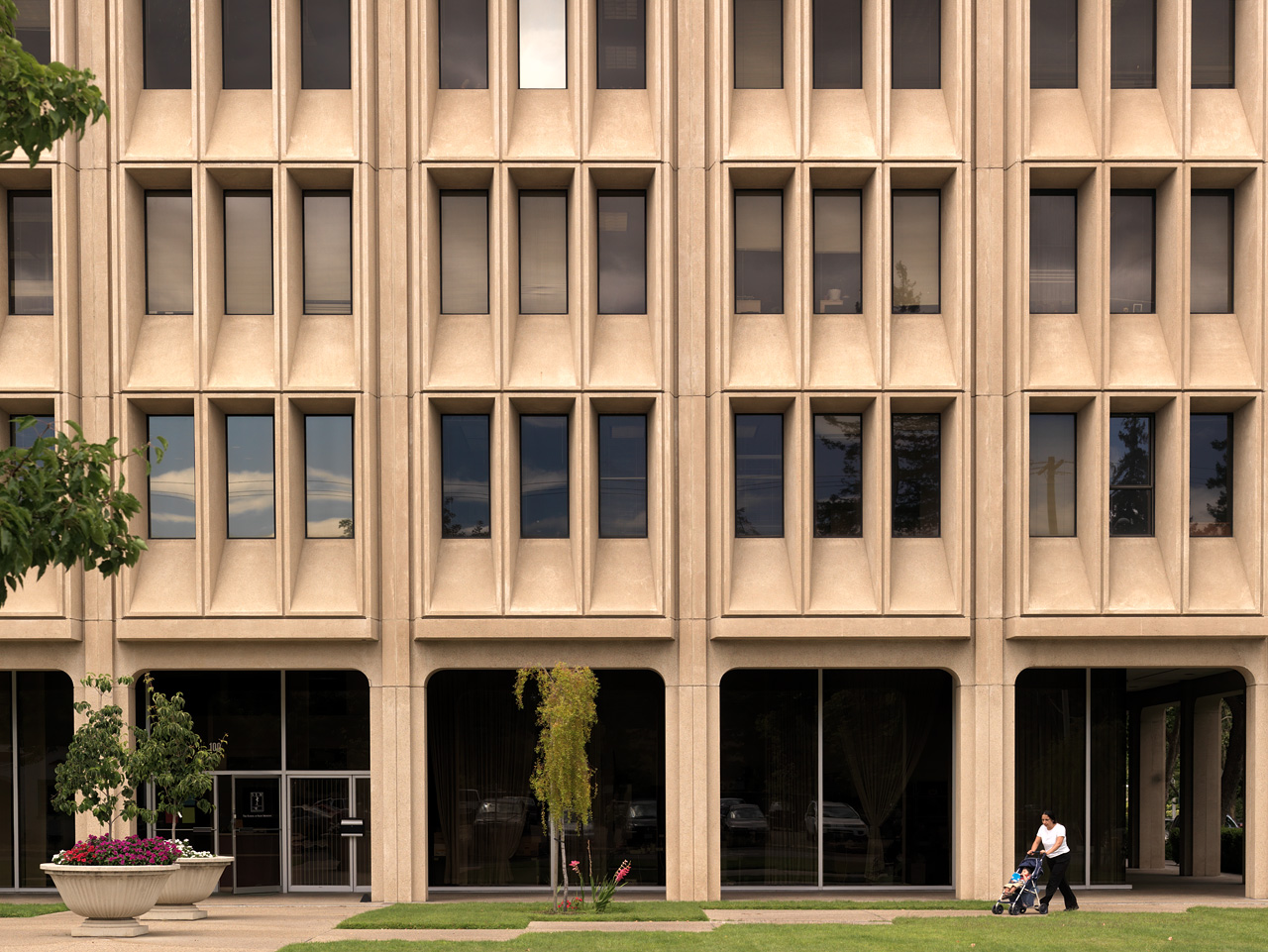
ISO 100, HC 2.8/80, 1/200 @ f/8
July 21, 2007
See also the December 10, 2008 review of the 28 megapixel Mamiya DL28 in DAP.
My curiosity piqued by the “retro” Hasselblad 503CWD, I next borrowed the Hasselblad H3D-39, a 39-megapixel state-of-the-art digital camera costing approximately US$30,000 (not including another $2400 or so of California state sales tax, for official squandering). The $30K price includes the camera body and viewfinder, the 39-megapixel digital back, and the 80mm f/2.8 lens, one you’ll need to complement if you want any wide angle capability.
Hasselblad also offers the H3D with a 22-megapixel back and a 31-megapixel back (see data sheet). The 22 and 39-megapixel versions use a huge sensor that is 49.0 X 36.7mm in size, while the 31-megapixel version uses a smaller 44 X 33mm sensor with micro lenses, whose performance characteristics are tailored to higher-ISO shooting (up to an unimpressive ISO 800).
Hasselblad claims that the H3D is “full frame”, which is nonsense; medium-format film shooters enjoy 56mm-wide images, 17% wider than the H3D’s digital back.
Photosite size, or why “size matters”
Think of photosites like roof tiles; they “tile” the sensor area. Each photosite records how much light impinges upon it, and each photosite is monochrome (one color only), with 1/2 of them filtered to green, 1/4 to red and 1/4 to blue (at least with most digital sensors).
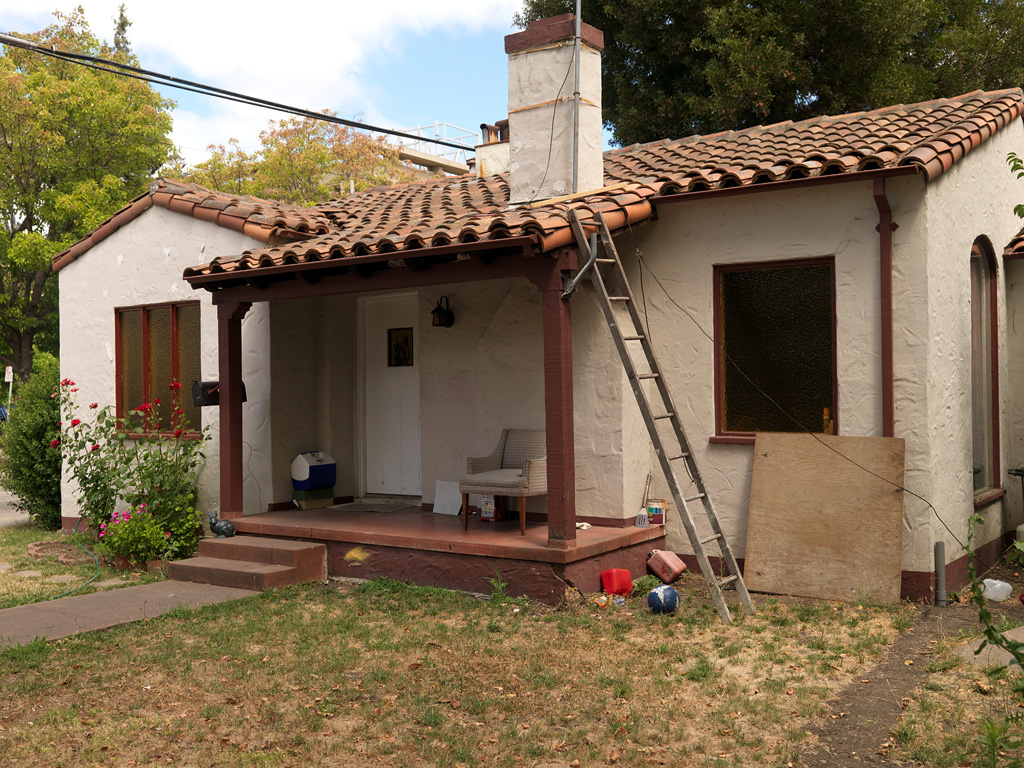
ISO 100, HC 4/50, 1/100 @ f/8
Why large photosites are preferred
The size of the photosites has a huge impact on image quality. All other things being equal, larger photosites have the following advantages:
- Increased sensitivity and therefore lower noise;
- Increased dynamic range and smoother tonal gradation;
- Lower demands on optical quality;
- Higher resolution and contrast as the lens is stopped down (especially f/11, f/16, f/22).
In short, large photosites are a major reason that photographers are willing to pay the huge premium for a medium-format digital camera: to obtain a larger sensor and therefore larger photosites and therefore higher quality. Because of its extreme resolution, the H3D somewhat undermines this value proposition, using relatively small photosites (6.8 microns).
The H3D-39 photosites
The H3D-39 has a 28% larger sensor than the 503CWD (48X36mm vs 36.7X36.7mm). With 2.4X times as many photosites (39m vs 16m), each photosite must be reduced in area. Accordingly, photosites on the H3D are 6.8-microns square, as compared with the 8.95-micron photosites of the 503CWD.
The photosites of the 503CWD are 73% larger, and big, fat pixels offer superior per-pixel image quality. Some photographers might be better off with the 503CWD for that reason.
The gap in sensor size between a full-frame 35mm digital SLR and the H3D is about 2X (36mm X 24mm vs 36.7mm X 49mm).
The Hasselblad 503CWD has nearly the same sensor-size advantage over the H3D-39 as medium format has over 35mm digital SLRs—and such differences are used to “make hay” by the marketers of medium format digital backs—pay attention and buy wisely to fit your own needs.
Impressions — operation
Many of these items are personal preferences and are of course highly subjective. You’ll have to handle (and shoot) the H3D yourself to determine if you agree or not. But be sure to also handle the Hasselblad 503CWD as well as the Mamiya ZD and a Canon 1D series DSLR. Doing so will yield valuable insights—mine are detailed here.
Ergonomics and feel
Hasselblad spent decades with its camera design, culminating in the 500 series cameras, of which the 503CWD is one example. That design proved its mettle. Handling the H3D, one realizes that it’s a big camera, an ungainly camera, a camera with a viewfinder that isn’t quite in the right place, a camera that one might have to learn to like.
Perhaps with time one figures out how to make the H3D an extension of one’s arm. While I quickly felt comfortable with the 503CWD, the H3D just felt awkward. The H3D felt significantly larger than the 503CWD (I didn’t measure and compare objectively, it’s a feel thing). I don’t think I’d ever quite get used to the H3D form factor.
Viewfinder
The H3D offers the “improved” higher-magnification HVD90X viewfinder, which shows exactly the image to be captured, no more, no less.
I found this harder to work with than the viewfinder of the 503CWD, which offers a broader view inscribed with a square showing the frame to be captured. On the H3D, seeing the entire frame required using either peripheral vision or active eye movement to examine the corners. Neither approach feel as easy as the 503CWD viewfinder.
Eyeglass wearers should pay particular attention to this issue.
Autofocus
Autofocus works reasonably well, if you like a “science fair” feel to things. But compared to a Canon EOS 1D Mark III, it feels slow and klunky, perhaps excusable given the size and weight of the lenses. Then again, Canon can make a 300mm f/2.8 focus blindingly fast, so why can’t Hasselblad produce autofocus that doesn’t feel like it was invented in 1979?
The viewfinder offers little to disambiguate the chosen focus point, and don’t even think about wanting a dozen or more focus points as with a 35mm digital SLR.
One could excuse the autofocus if manual focus were well done. But like nearly all autofocus lenses (35mm or otherwise), the new HC lenses are ill-suited to manual focus, lacking the precision, feel and “throw” of a silky-smooth helicoid design.
I vastly prefer the precision and feel of the Hasselblad-Zeiss 4/40mm IF that I used on the Hasselblad 503CWD. It’s not just a preference, it’s the ability to accurately and quickly achieve desired focus on a consistent basis. Remember, to extract the full 39 megapixels of resolution from the H3D-39, one must achieve optimal focus.
Auto exposure
I simply would not trust this camera to take optimal exposures, as it made a hash of several scenes. I frequently had to resort to manual exposure or exposure compensation to obtain the desired result. If one is going to sacrifice nearly everything (money, form factor/convenience, etc) for image quality, one must be prepared to nail the exposure to extract that quality.
LCD display
Why are LCDs so disappointing on nearly all medium format backs? The 2.2" LCD screen on the H3D’s digital back is tiny, and the color accuracy was appalling. A US$30K camera should have a 4" screen with accurate color, not a 2.2" porthole. And it ought to fix me breakfast, too.
I found that the LCD was useful for viewing the image histogram, and little else. Zooming in to examine the image is also possible, but the amount of zoom seems limited, and the ergonomics are poor (compared to the Canon EOS 1D Mark III).
Quirks
Is the H3D ready for prime time, or is it a science fair project? I expect zero problems with a Hasselblad, especially for US$30K.
Card compatibility
I brought along a SanDisk Extreme IV 8GB card that I had used in the Hasselblad 503CWD and Mamiya ZD without a hitch. The H3D refused to format it or even recognize it as present. We tried several things, and finally had to format the card in the computer. After 5 minutes of screwing around, the H3D finally agreed that the card was acceptable. Such flakiness is inexcusable in a professional camera.
Reattach the viewfinder
Every few minutes, the H3D would refuse to fire, and instructed me to “Reattach the viewfinder”, which of course was firmly latched on already. Each such time, I released the viewfinder and snapped it back into place, ready to shoot another 2 or 3 pictures before the next admonishment. Such flakiness is inexcusable in a professional camera.
Image quality
I shot the H3D-39 for about two hours, using three “HC” lenses: the 28mm, the 50mm, and the 80mm. The 80mm is the smallest and least demanding to shoot; the other two morph the camera into an even more unwieldy contraption. However, the 28mm is impressively compact and light for its focal length, apparently because Hasselblad’s FlexColor can correct lens deficiencies such as distortion in software, the wave of the future with all cameras (a prediction).
I came away impressed with how demanding it is to extract the full 39 megapixels from the H3D. Fortunately, mirror damping seems excellent on the H3D, which helps in achieving sharp handheld photos. Depth of field is a serious issue though, and stopping down beyond f/16 is ill-advised due to the image-degrading effects of diffraction.
The image files offer phenomenal detail (at the plane of focus), but they do not accept sharpening as well as those from the 503CWD; they are not as “clean”. Color rendition and overall look is pleasing, but as pleasing as what I see from my Canon 1D Mark III. I cannot prove that, it’s simply that the H3D images do not evoke a gasp upon viewing, whereas the Canon 1DM3 wows me on a regular basis.
Noise
Noise seems to be fairly random in nature, much like film grain—that’s a good thing. A surprising amount of blotchiness can be seen in the sky in the red channel, but it is not surprising given the 6.8-micron photosite size. The image below was shot at ISO 50 and pushed 0.5 stop. Mouse over it to see the red channel; observe the clumpy and mottled sky.
The mottling is not a fluke; below is a crop taken at ISO 100. No pushing or Levels adjustment was done; it is a straight conversion with sharpening of {100,0.3,0}. The red channel is not particularly underexposed; it shows RGB values (in sRGB) of around 90 (out of 255), a far cry from black. Mouse over to see the blotchy red channel.
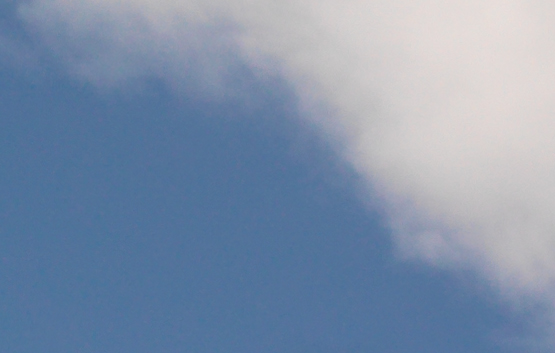
ISO 100, HC 4/28, 1/800 @ f/5.6, actual pixels. Mouse over for red channel.
The net effect of this “mottling noise” is impaired image quality, with a reduction in the ease of manipulating an image. The noise might also be contributing to the colored speckles seen at all ISO values and in nearly every image.
Noise — comparing with the Canon EOS 1D Mark III
The Canon EOS 1D Mark III represents the state of the art in digital SLR technology and so is an excellent reference point for comparison.
Below are crops from the Canon EOS 1D Mark III at ISO 50 and ISO 100. The 1DM3 has 7.38-micron pixels, about 17% larger in area than the H3D-39. Canon also claims a high “fill factor”, making them collect more light than they otherwise might.
The US$4500 Canon 1DM3 outperforms the H3D-39 in terms of noise, showing a smoother, cleaner image. Even the blue looks clean and natural, whereas the H3D-39 blue sky looks dirty, as if it needs a good scrubbing.
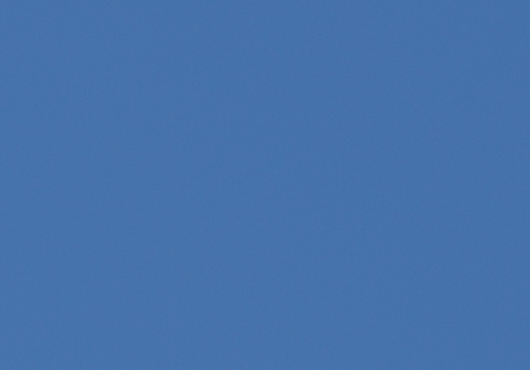
Canon EOS 1D Mark III, ISO 50. Mouse over for red channel.

Canon EOS 1D Mark III, ISO 100. Mouse over for red channel.
Color Moiré and/or colored speckles
The H3D-39 has a tendency to produce colored speckles, which are readily visible at every ISO value. Some of the effect might be noise, but most appears to be due to moiré. The actual pixels crop below is from the Building shot. Colored speckles are clearly visible, and this effect is seen in virtually every shot taken. The effect cannot be considered a positive quality, and it could be trouble for some applications, such as product photography.
The Hasselblad 503CWD seems to suffer from fewer such problems, but issues can be seen in fine detail, such as tree branches. Perhaps both cameras lack an anti-moiré filter over the sensor?
ISO 100. Note colored speckles throughout
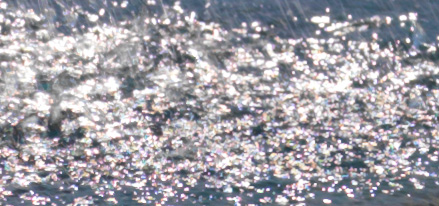
ISO 50. Note colored speckles throughout
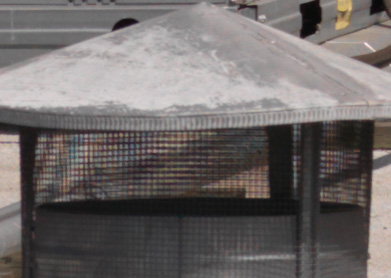
ISO 100. Moiré visible in screen
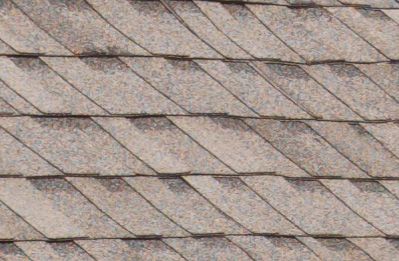
ISO 100. These roof tiles are not so colorful in real life!
See the Rooftop actual pixels crop for yet another example of the color speckling issue.
Color
In the image shown below, my perception of the color of the flowers was considerably different than that rendered by the H3D-39; they were some kind of deep purple. While color perception and color memory are notoriously inaccurate, there can be little doubt that while the leaves and bricks are a reasonable match, the flower petals are wildly inaccurate (the subject was chosen intentionally!). The image below is with white balance; and are much worse (garish).
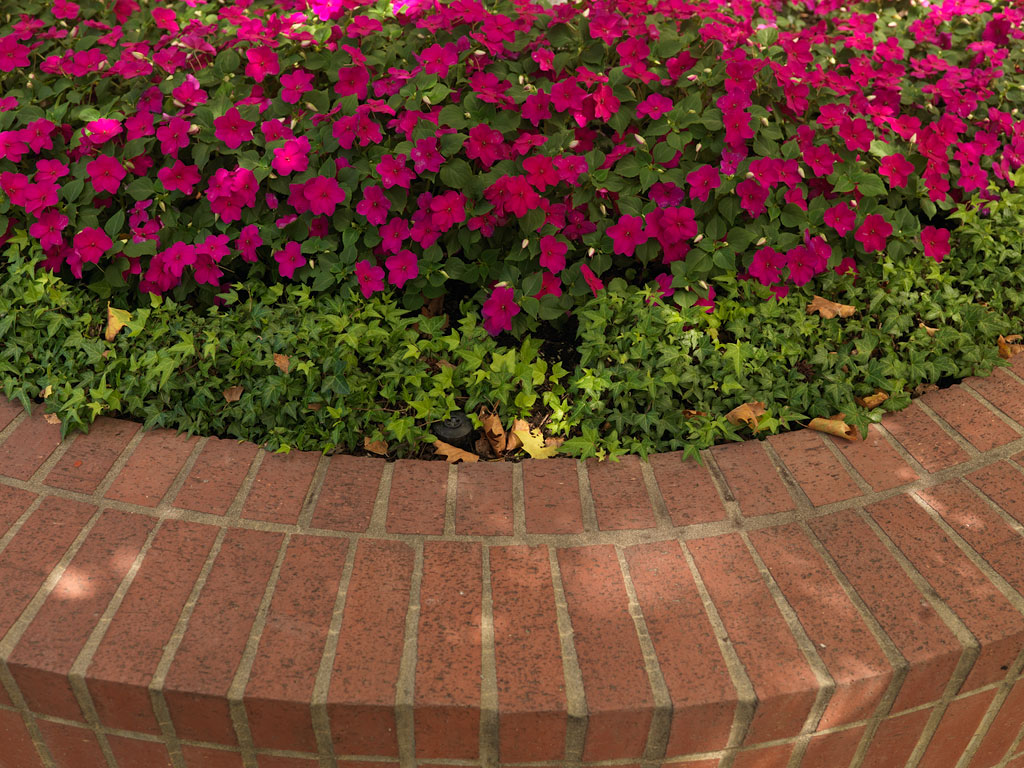
Wildly-inaccurate color in the flower petals
8-bay Thunderbolt 3
2.5 or 3.5 inch hard drives, NVMe SSD, USB-C, USB-A, DisplayPort 1.4, SD slot, PCIe slot, 500W power supply.
Non-RAID or RAID-0/1/4/5/10.
Capacities up to 128 Terabytes!
Life and “zing”
In comparison to my Canon EOS 1D Mark III, a certain “heavy” feel pervades many of the H3D-39 images, reminiscent of the feel I get from my Nikon D200. The sky was overcast at about 4pm, so light quality was not great, but not poor either.
I find my Canon 1DM3 images much more pleasing, images that leap off the page with minimal post-processing effort. The H3D images just don’t do that, but I admit to ignorance of how to best exploit H3D files in Hasselblad’s FlexColor software. Still, processing an image in 16-bit mode with daylight white balance ought to yield stunning images most of the time. Read the diglloyd.com blog entries on the Canon EOS 1D Mark III images, and come to your own conclusions.
The image below with the orange flower has this “heavy” feeling. I processed it at a white balance of 4800K and lightened it, which helped, but it still lacks “life”. It looks like a picture, not the real thing. The point here is not that it couldn’t be made to look good, it’s that it requires work to make it look better.

ISO 100, HC 4/28, 1/320 @ f/8
Lens corrections (Digital Aberration Correction)
The FlexColor software performs lens corrections automatically. This is one of Hasselblad’s claimed advantages for the H3D when using the HC lenses. There does not seem to be a way to disable the corrections, so the comparison below uses the small preview size, to which FlexColor does not apply the corrections. Mouse over to see the before/after result.

ISO 400, HC 4/28, 1/60 @ f/4.8, lens corrections
Architectural photographers in particular should be very pleased with this software-based approach to fixing lens distortion. Terrific!
More is going on besides distortion correction, but lacking on on/off setting in FlexColor, it’s hard to say anything further.
Flare and starburst
There have been assertions made in online forums (PDN) that the H3D-39 has a flare or starburst problem at slower shutter speeds. I examined the posted images and conclud that the poster’s test is invalid, due to substantially different focus (and/or aperture), which invalidates the comparison. The poster might well be correct in his claim, but due to focus differences the particular images presented are useless for making an objective comparison.
I could detect no such flare problems. However, my test shots were not at slow shutter speeds, since all were handheld. So there might be a problem, but my tests at faster shutter speeds don’t show one. Also, none of the test shots include extremely bright specular reflections.
The image below was shot at 1/800 @ f/16. A diffraction star is normal and expected at f/16 with all lenses, and I see nothing unusual about the image. There is a faint double-star effect, but that too is expected, and attributable to the subject matter (based on my personal testing of that precise phenomenon).

ISO 400, HC 2.8/80mm, 1/800 @ f/16, click for actual pixels
Three more examples are shown below, none of which show any unexpected issues.
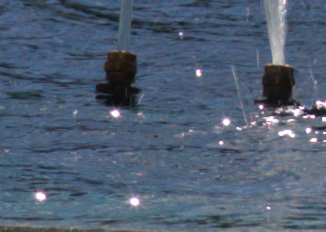
ISO 50, HC 2.8/80mm, 1/125 @ f/11, actual pixels
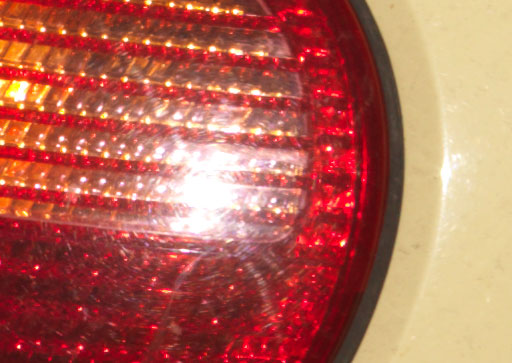
ISO 100, HC 4/28mm, 1/800 @ f/5.6, actual pixels
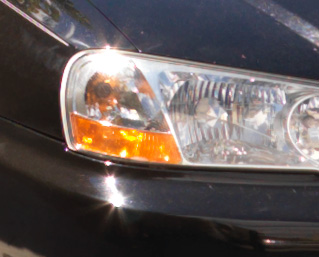
ISO 50, HC 4/28mm, 1/125 @ f/5.6, actual pixels
Examples
This section shows the image quality one can expect from the H3D-39. Click on images to see a page along with an actual-pixels crop.
Poppies Mural
This image shows off the tremendous detail achievable with the H3D-39. Compare to the Hasselblad 503CWD image (lighting differed).
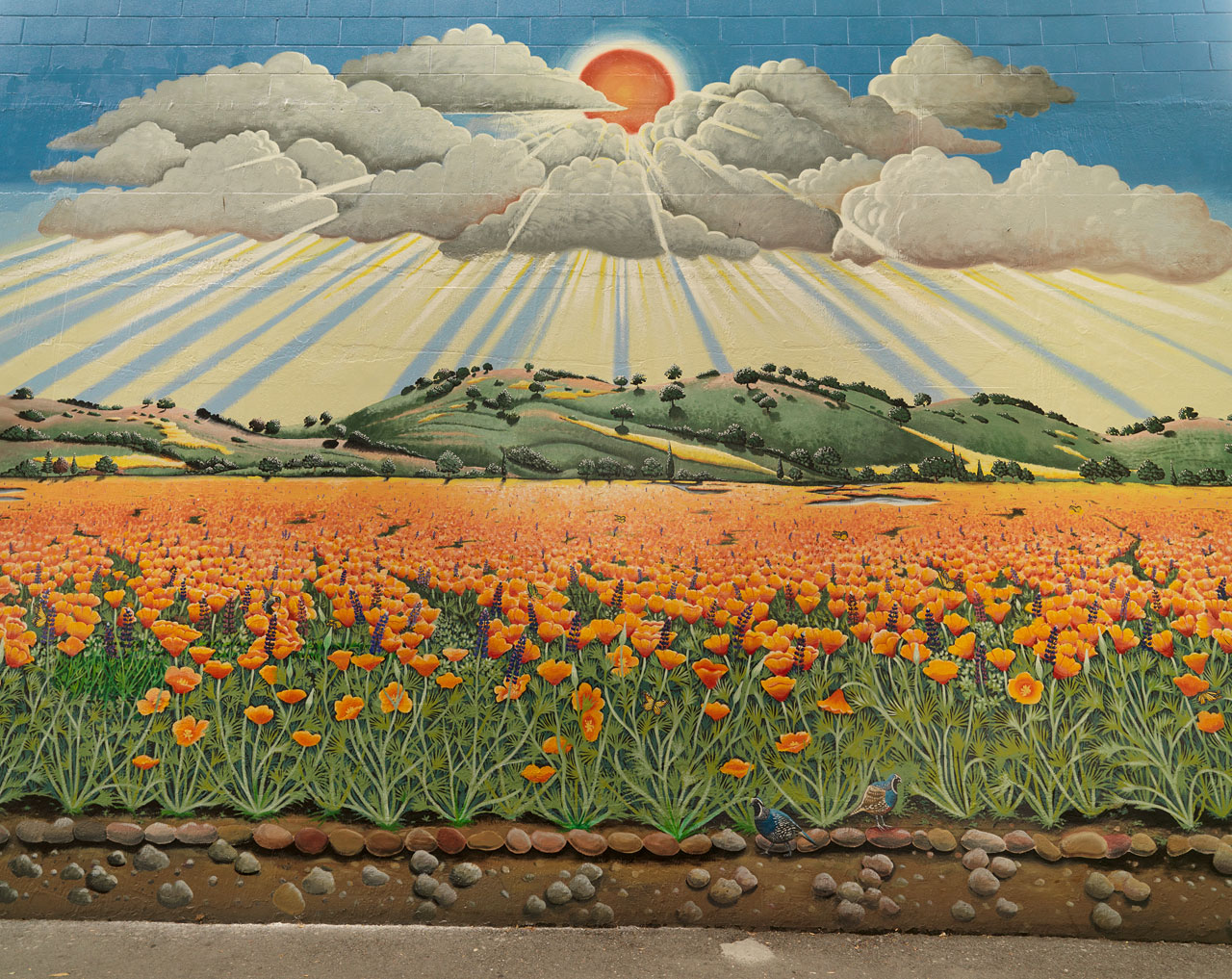
ISO 50, HC 4/28mm, 1/320 @ f/4, pushed 0.8 stops
Grocery carts
Very pleasing grayscale results can be obtained. Below is the “L” channel from Lab mode version of the file.
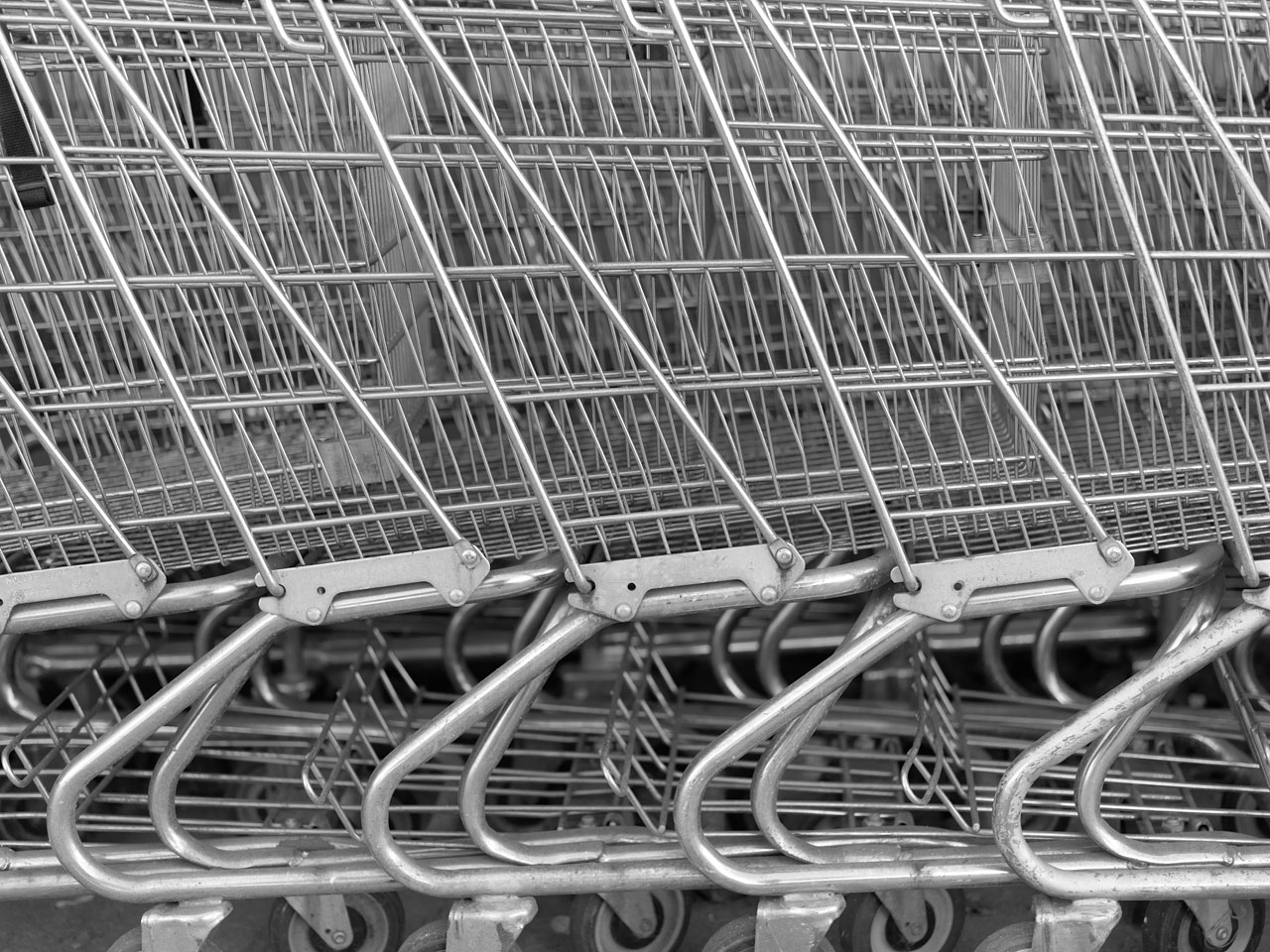
ISO 100, HC 2.8/80, 1/160 @ f/2.8
Refuse bins
Very nice tonal rendition, and colors were rendered as seen and as expected, with the desired effect in the final image.
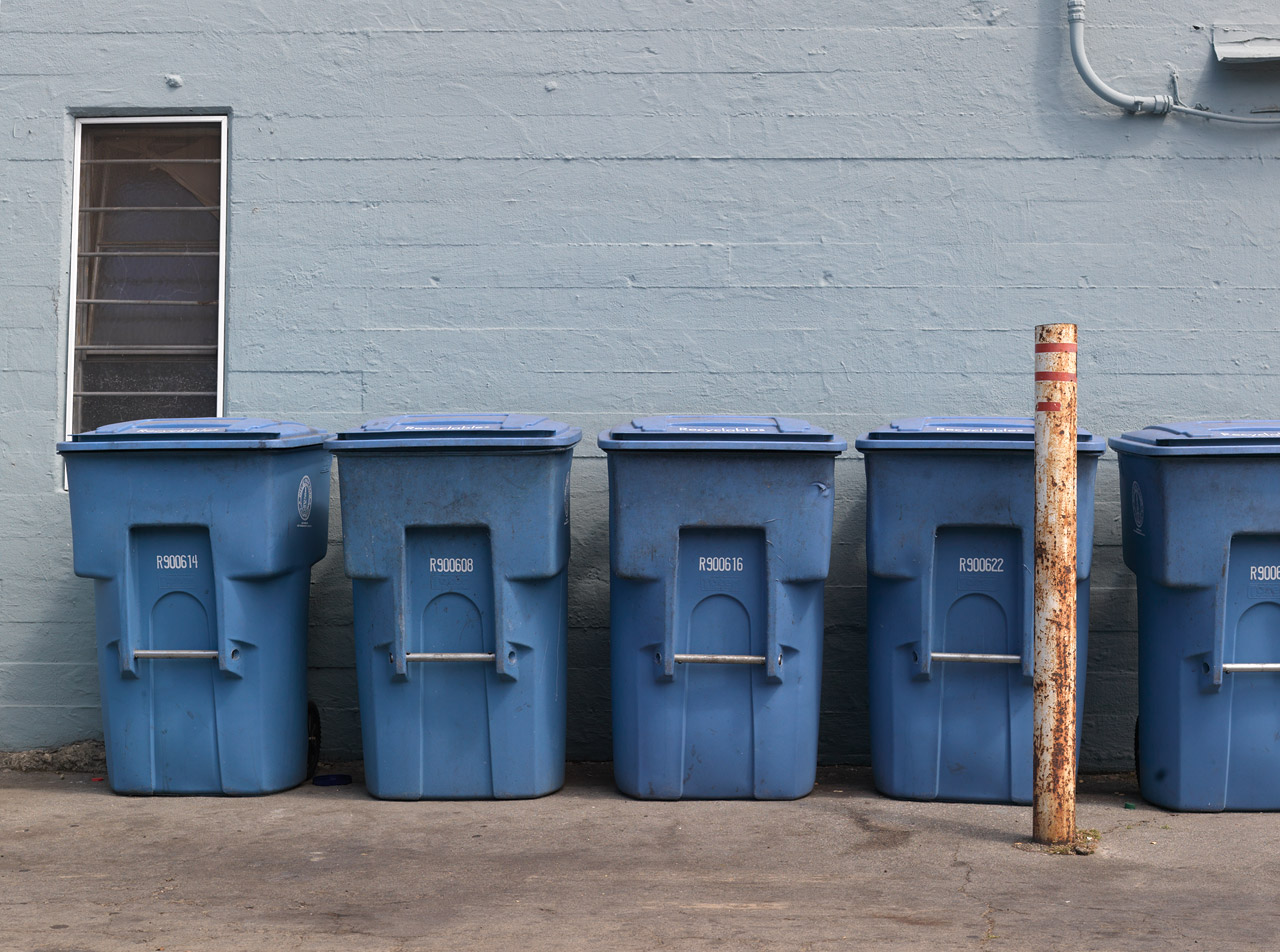
ISO 100, HC 2.8/80, 1/100 @ f/9.5
Dirty Street
Very nice tonal rendition, capturing the entire range without loss of any shadow or highlight detail. At ISO 200, color mottling is evident, especially in the sidewalk area. See the actual-pixels crop.
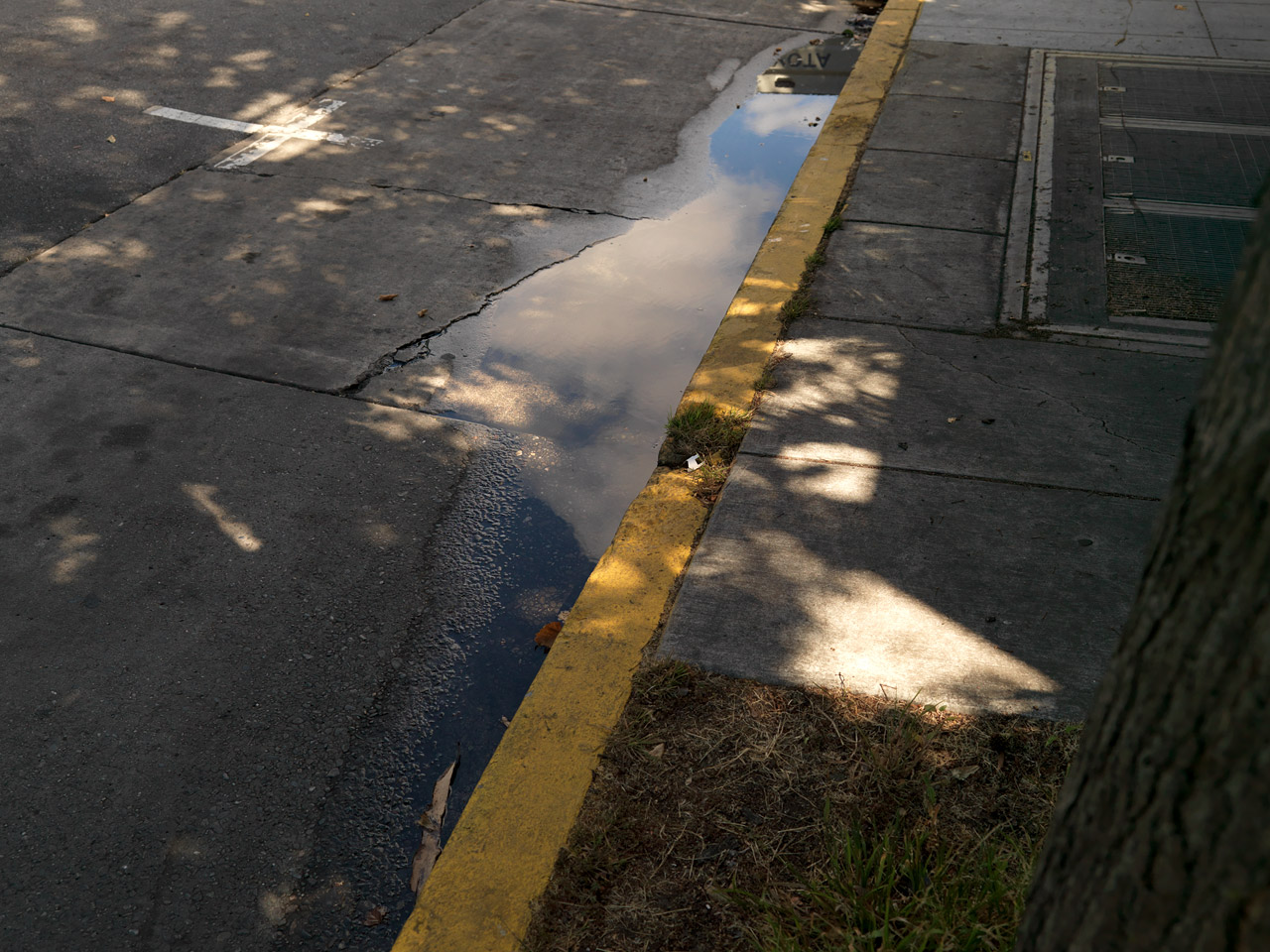
ISO 200, HC 4/50, 1/160 @ f/8
Ocean mural
Pleasing and accurate.
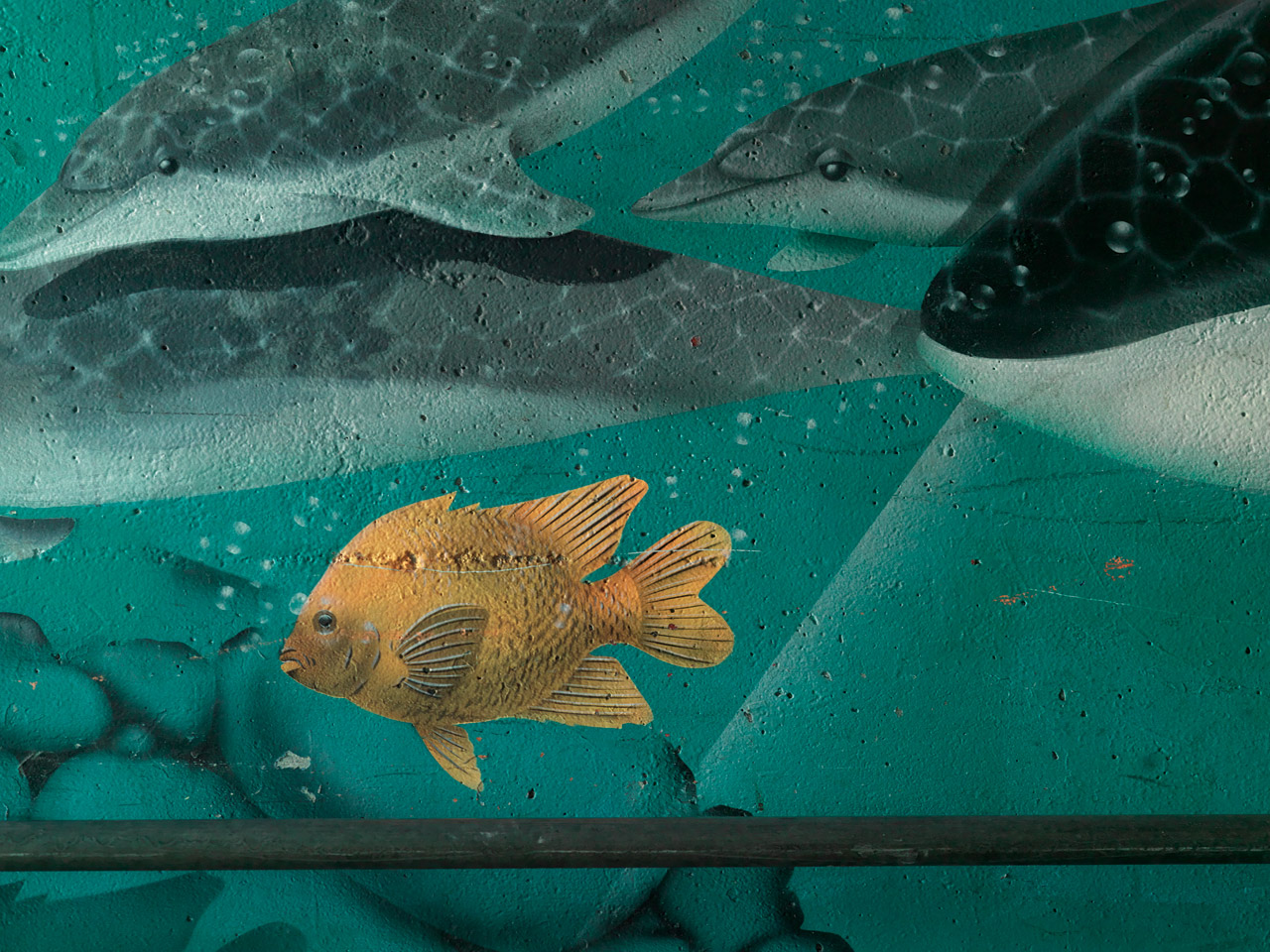
ISO 400, HC 2.8/80, 1/25 @ f/5.6
Hotel California
(Cropped). It looks real—a very nice result.
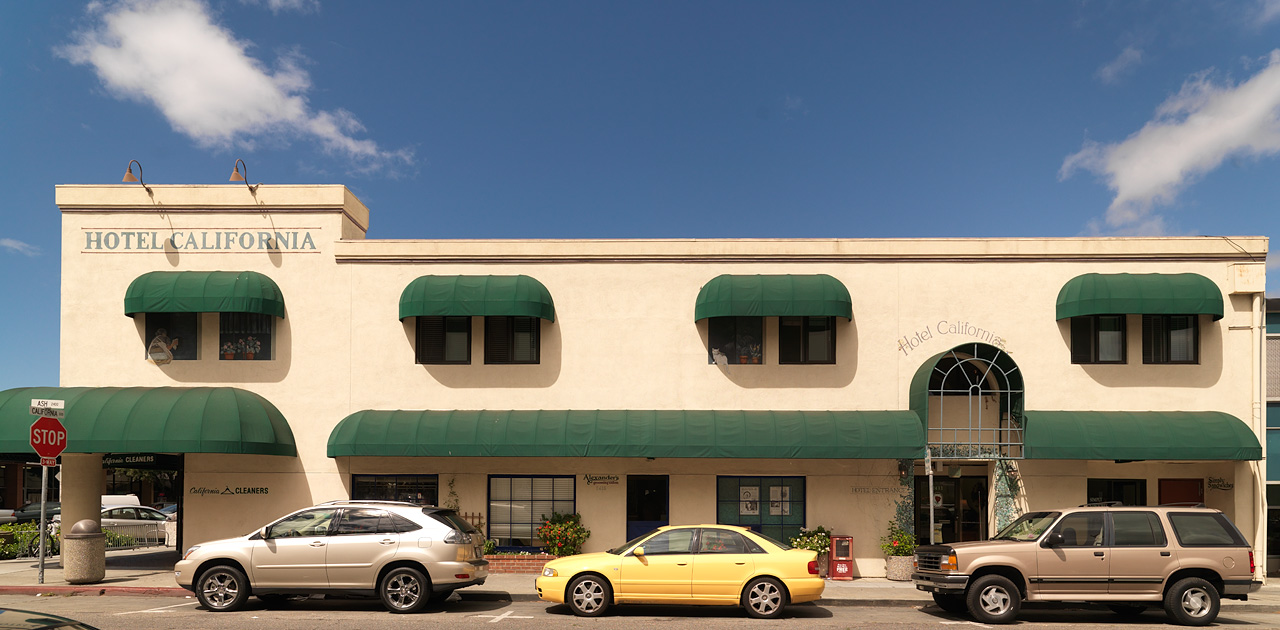
ISO 100, HC 4/28, 1/800 @ f/5.6
Rooftop
There is an incredible level of detail present, but the quality of that detail is impaired by the strong color speckling already seen. Observe the tree branches in View the actual pixels crop to see the issue.
In shots like this, depth of field is key—the foreground suffers from not quite enough depth of field, as does the very far background, even though the image was taken at f/11. With the H39D-39, one must pay careful attention the plane of focus and aperture, or those 39 megapixels will not be exploited.

ISO 100, HC 2.8/80, 1/320 @ f/11
Conclusions
Found this review useful? See the December 10, 2008 review of the 28 megapixel Mamiya DL28.
One can reasonably expect world-class image quality from a US$30,000 camera, quality that clearly trounces anything else. In terms of resolution (detail), the H3D-39 delivers on that expectation. But in terms of image quality per pixel, the H3D-39 has some shortcomings.
Perfect technique is required to fully exploit the H3D-39’s resolution. That means optimal focus, not stopping down past f/11, mirror lockup etc. Even so, micro contrast must obey the laws of optics, and those laws work against the H3D with its relatively small photosites. Micro contrast provides the “bite” or “pop” to an image, an effect clearly visible when comparing the full-frame Canon EOS 5D to the DX-frame Nikon D2x.
The H3D-39 offers extraordinary detail, but noise and overall pixel quality seems to be inferior to that of the “fat pixel” 503CWD. It’s unclear if the lower-resolution H3D-22 offers the same image quality as the 503CWD, because the H3D-22 was not available for the author’s use. However, the photosites of the H3D-22 are almost exactly the same size as of the 503CWD, so image quality might be nearly the same on a per-pixel basis, albeit the lens must cover a much wider area, possibly reducing image sharpness and contrast.
Only those photographers who intend to make very large prints should consider the H3D-39. Most photographers should take a hard look at the H3D-22 (not reviewed) and the 503CWD, both of which have considerably larger photosites. There are also other brands which might offering different image quality and sensor sizes.
Ergonomics are a personal preference, but in the author’s view the H3D suffers from an awkward design that is simply less pleasurable to shoot than the 503CWD. Those photographers that require autofocus and auto exposure will unfortunately have to rule out the all-manual 503CWD.
See also:
An Hour with the Hasselblad 503CWD
Thirty Minutes with the PhaseOne P20+



















